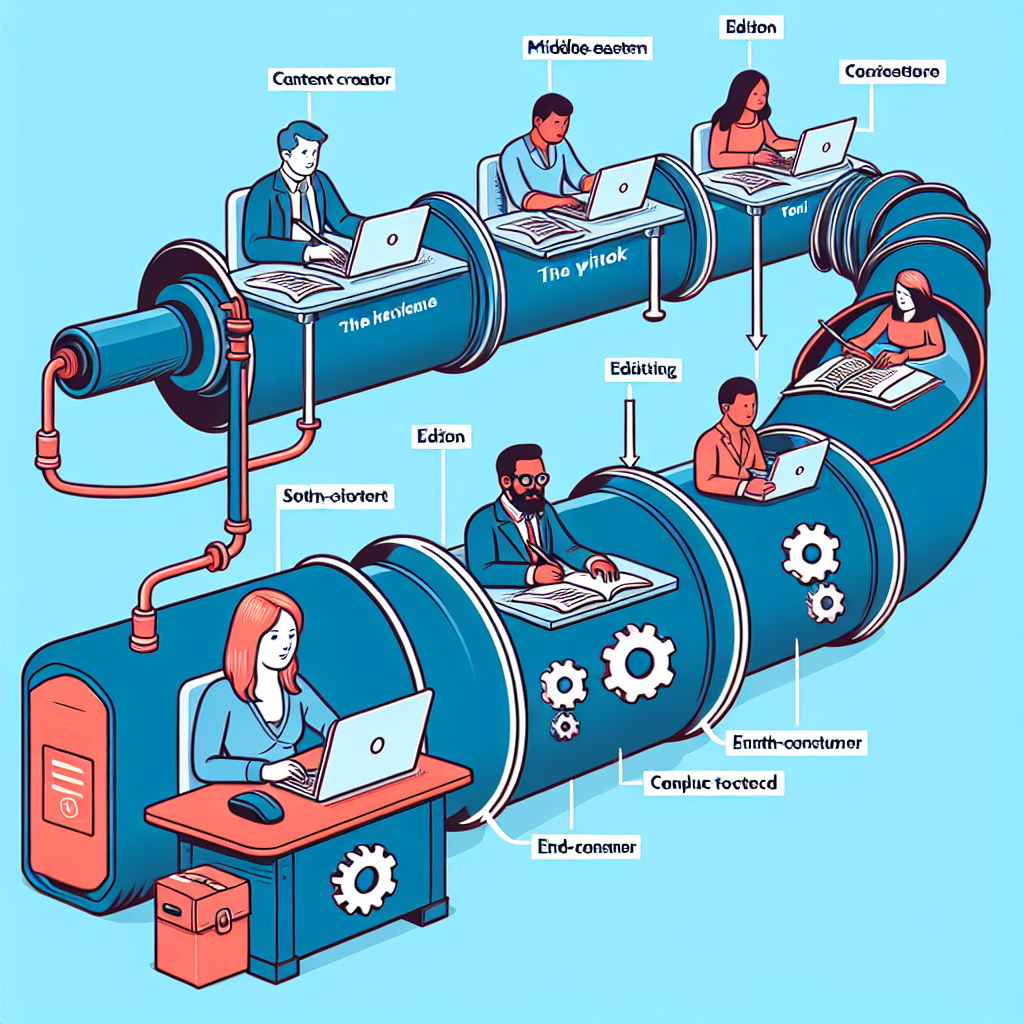Introduction
Creating high-quality content using advanced tools and workflows is a pivotal process in today’s competitive digital landscape. This article aims to provide a detailed guide for content creators, agencies, and SMB owners to maximize the efficacy of their content production pipelines while remaining efficient and high-impact.
At the consideration stage of the buyer’s journey, potential customers are comparing their options and considering solutions to their problems. This stage is crucial for converting potential customers, as it helps to build trust, establish authority, and foster engagement. With recent trends highlighting the importance of using AI and machine learning in content creation, it’s important to stay updated with the latest developments.
This piece will outline various strategies, tools, and approaches essential for high-quality content creation, ensuring time and cost savings while maintaining high quality and enhancing visibility.
Goals
Foster Customer Engagement
Creating engaging content is pivotal for capturing and retaining the interest of potential customers. Advanced tools and tailored workflows enhance content creation, ensuring that it resonates with the audience and encourages interaction. Increased engagement translates to stronger brand loyalty and higher conversion rates.
Establish Authority and Trust
In the consideration stage, establishing authority is paramount. By leveraging advanced tools for SEO, utilizing ML author personas, and maintaining high content standards through automated QA, businesses can build credibility. This trust is crucial for guiding potential customers toward making informed decisions.
Improve Customer Education
Educating potential customers is critical during the consideration stage. Detailed, informative content that addresses their needs and concerns helps bridge knowledge gaps and builds confidence in the brand. This educational approach ensures that customers are well-informed and better prepared to make purchasing decisions.
Content Approaches
Maximizing Efficiency with Tailored Content Production Pipelines
Tailored content production pipelines streamline the content creation, management, and distribution process. This efficiency saves time, enhances productivity, and ensures that content is delivered consistently. Implementing tailored workflows means creators can focus on quality rather than operational logistics.
AI-driven SEO tools automate the optimization process, enhancing content visibility and reducing manual efforts. These tools analyze data trends, suggest keywords, and optimize content to rank higher in search results, ensuring that content reaches a broader audience efficiently.
Leveraging Machine Learning Author Personas for Targeted Content
Machine learning author personas help create content that resonates with specific audience segments. By understanding audience behavior and preferences, these personas guide the tone, style, and topic selection, ensuring content is relevant and engaging.
Automated QA Layers: Ensuring High-Quality Content Every Time
Automated QA layers maintain consistent content standards by scanning for errors, checking formatting, and ensuring compliance with guidelines. This process eliminates manual errors, ensuring that content remains high-quality and professional.
Dynamic Social Media Management for Content Creators
Effective social media management strategies maximize engagement and ensure content reaches the intended audience. Utilizing advanced tools for scheduling, analytics, and engagement can streamline social media operations, allowing for real-time interaction and improved customer relations.
Unique Brief to Publish Workflows: From Ideation to Execution
A comprehensive workflow from content ideation to publication ensures that no step is overlooked. This process includes idea generation, content creation, editing, SEO optimization, and final publication, highlighting time-saving tips and best practices throughout.
Massive Content Operation Savings: Achieving More with Less
Advanced tools and workflows lead to significant operational savings. By automating repetitive tasks and optimizing workflows, content creators can produce high-quality content at scale without proportional increases in resources.
Creating High-Impact Content at Scale
Producing large volumes of high-quality content efficiently requires the integration of advanced tools and streamlined workflows. By standardizing processes and leveraging technology, creators can meet high content demands without sacrificing quality.
The Role of Enhanced SEO in Content Marketing Success
SEO remains a cornerstone of content marketing success. Advanced tools ensure that content is optimized for visibility, driving traffic, and enhancing overall performance. Effective SEO strategies increase the reach and influence of content, contributing to marketing goals.
Streamlining Content Collaboration Across Teams
Enhancing collaboration and communication among content creation teams is critical for maintaining cohesion and consistency. Advanced collaboration tools enable seamless sharing, real-time feedback, and efficient project management, ensuring that teams work cohesively towards shared goals.
Engagement Techniques
Effective engagement requires interactive elements such as webinars, Q&A sessions, and live demos. These formats address audience questions and encourage participation, building a deeper connection with potential customers. Personalizing interactions based on individual needs further enhances engagement and trust.
Measuring Impact
Measuring the impact of consideration content involves tracking key metrics like engagement and conversion rates. Analyzing this data helps assess content effectiveness and identify areas for improvement. Gathering audience feedback through surveys and tools helps refine content strategies, ensuring continuous optimization and relevance.
Conclusion
The consideration stage in the buyer’s journey is a critical point for converting potential customers. High-quality content created with advanced tools and workflows not only enhances visibility and engagement but also establishes authority and trust. By implementing the strategies and techniques discussed in this piece, content creators, agencies, and SMB owners can transform their content creation workflow, achieving substantial time and cost savings while ensuring high-quality output and enhanced visibility.
Readers are encouraged to adopt these insights and stay informed about related topics to maintain a competitive edge in content creation. By applying these practices, businesses can better meet their content marketing goals and drive success in the digital landscape.
Related Posts:
How Advanced Tools are Transforming Content Creation (97.52% match)
Streamlining Content Creation with Advanced Tools and Workflows (97.11% match)
`Harnessing Advanced Tools and Workflows for Superior Content Creation` (97.02% match)









